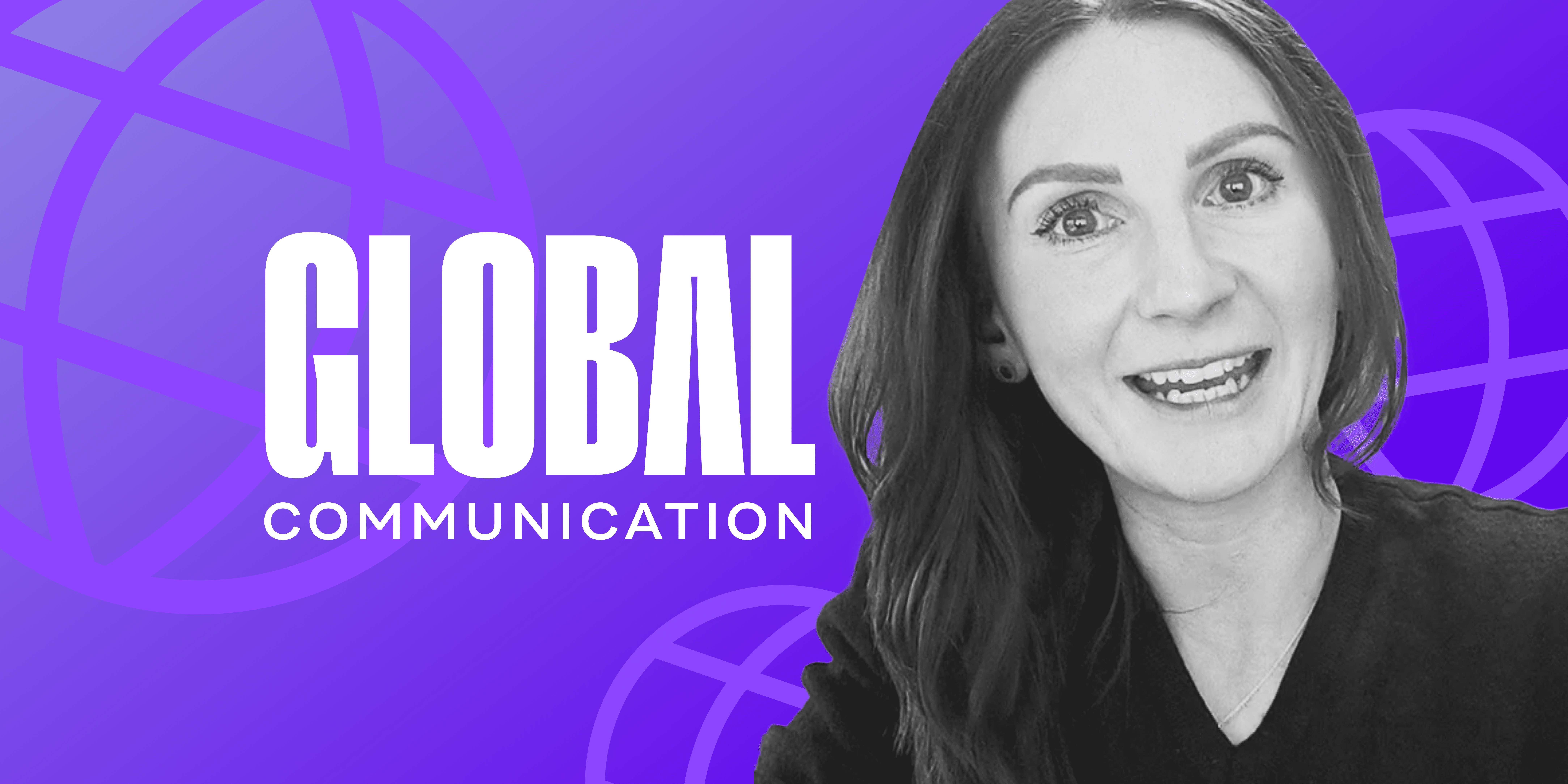Learn from 5,000+ comms leaders on exec buy-in, engagement, and the ROI puzzle.
4 Things To Consider as an Internal Communicator in a Global Organization

Caitlin Kirwan
External Contributor - Internal Comms & Engagement Expert
February 14 2025

Operating in a way that engages employees across all four corners of the world is one of the most important priorities for internal communicators in global organizations.
But continually thinking outside of the country where we’re based takes both practice and discipline. And ‘going global’ requires a conscious broadening of perspective by looking beyond our own culture and context.
Effective internal communication within a global organization is largely contingent on the comms teams’ ability to adopt a global mindset and communicate in a way that’s truly inclusive of all employees across all different geographies.
In this blog post, I consider what that means on a practical level, and explore the actions we can take to engage a geographically dispersed workforce.
Adopting a global mindset
So what does it mean to adopt a ‘global mindset’?
Essentially, we’re talking about inclusion. Because different geographies mean different cultures and perspectives, and, as Cat DiStasio said in her recent blog post, employees from different backgrounds won’t stick around if they feel excluded from the work culture.
Genuinely inclusive communication ensures all employees, regardless of location or background feel welcomed, valued, and able to participate fully. To make this a reality, we need to adopt a perspective that goes beyond cultural boundaries or national borders. And to achieve that, internal communicators must have an additional level of vigilance around things like time zones, language, and representation.
There are a few traps we can easily fall into. When operating at maximum capacity, as many of us in IC often are, that extra layer of vigilance can sometimes slip.
We can forget about things like scheduling company All-Hands within timezone-friendly slots. We can fall victim to pressure to send a company-wide communication about a particular religious holiday, which might exclude colleagues from different religious backgrounds. We can let non-translatable acronyms or jargon slip through the net.
We are humans, after all.
The good news is that we can easily avoid these common pitfalls by keeping a few important things front of mind.
4 considerations for taking your internal comms global
Based on personal experience and industry insights, I’ve set out four things that internal communicators need to think about to truly ‘go global’ and engage teams across the world.
Let’s jump in.
1. Cultural assumptions
Respecting cultural differences is one of the most important things IC teams in global organizations need to do.
To facilitate effective communication within a geographically dispersed workforce, internal communicators need to work extra hard to avoid making subconscious cultural assumptions. But as I mentioned earlier, continually thinking outside of our own culture and context takes practice and discipline.
Even when unintentional, making cultural assumptions in employee communications can damage both engagement and organizational trust. As Cat explained, “Cultural assumptions are another all-too-common pitfall in employee communications, such as referring to a winter vacation as ‘the Christmas Holidays’ or even just ‘the Holidays’, since many people do not celebrate holidays during this time. Cultural context also carries a lot of weight, and many common phrases derive from oppression and cultural insensitivity, such as ‘divide and conquer’ and ‘grandfathered in’”.
Respecting cultural diversity in your internal communication means making a conscious effort to avoid exclusionary topics, confusing language, or assumptions around shared traditions.
That doesn’t mean you should only refer to religious festivals or cultural celebrations that apply to all employees around the world, because that would be impossible. But it means that if you’re referencing Christmas or Easter in company-wide messaging with a global audience, you should also be referencing the major festivals that other religions celebrate, like Chinese New Year and Diwali.
2. Time zones
Every internal communicator in a global organization knows the importance of getting comfortable with working across multiple time zones. This seemingly simple consideration is something that can make or break your levels of engagement and interaction with international team members.
While you’re unlikely to find a perfect ‘golden hour’ that works for all of your employees around the world, there are a few ways to be as inclusive as possible.
Wherever possible, segment important company-wide communications so that messaging arrives with employees in each region at an appropriate time during their working hours. And if you’re planning an org-wide All Hands, schedule a few different time slots so that employees can join a session at a time that works best for them.
If your CEO, or whoever is hosting the All Hands, is reluctant to repeat the presentation multiple times, consider a ‘rotating host’ among other members of the C-Suite. A ‘group screening’ of a recording of the original session is also an option, but this can sometimes leave employees who are in different time zones feeling as though they’re less valued than those in the same country as the CEO.
Remember to work closely with team members in each different region to best understand what time slots work best for them.
3. Representation
That leads us nicely to the third consideration – representation.
Whether you have a dedicated IC resource for each region – as many large organizations do – or a geographically dispersed group of informal ‘comms champions’, having boots on the ground is incredibly valuable for ensuring effective internal communication across international teams. This group of people will become your global comms superstars, helping with things like proofreading company-wide announcements to check for cultural missteps, tailoring messaging to suit regional priorities, and advising on the best time slots for campaigns or events.
Employees based in a different country to ‘head office’ can often feel left out or underrepresented. But you can help to mitigate this by ensuring fair representation of team members right across the globe, spotlighting stories, customer wins, and exciting innovations on central channels.
People begin to tune out from internal messaging when they feel the content is not relevant to them, but prioritizing global representation and amplifying the voices of employees in multiple different regions helps keep things feeling fresh and engaging.
4. Connection
Encouraging employees around the world to connect with each other is one of the best ways for internal communicators to break down barriers and promote global engagement.
A few years ago, HubSpot talked about the popularity of its international buddy program, the Tomodachi (translating as ‘friend’ in Japanese) Program, which paired hundreds of employees each month and enabled them to meet for an informal chat with a colleague in another country.
Employee networks, clubs, or interest groups that span different countries and regions help to encourage a sense of ‘one global team’, as do opportunities for cross-cultural collaboration through things like mentorship programs or cultural exchanges.
And a human-centric intranet platform such as Workvivo makes this a million times easier by building connection and community across the global workforce and bringing everyone together into one virtual room. Features like Spaces, Workvivo’s micro-communities, enable employees to interact and collaborate across locations, helping them create connections, share information, and work closer together.

